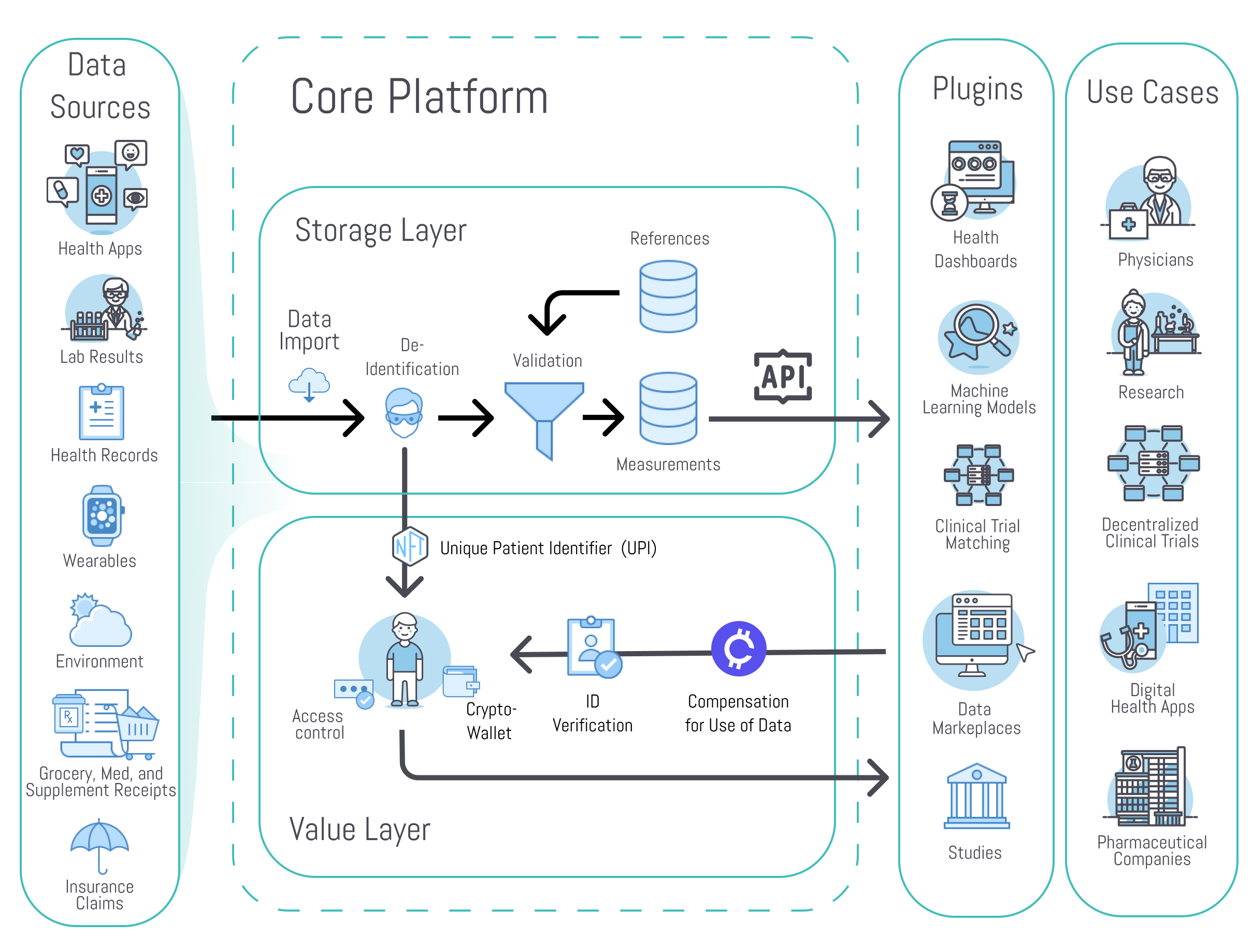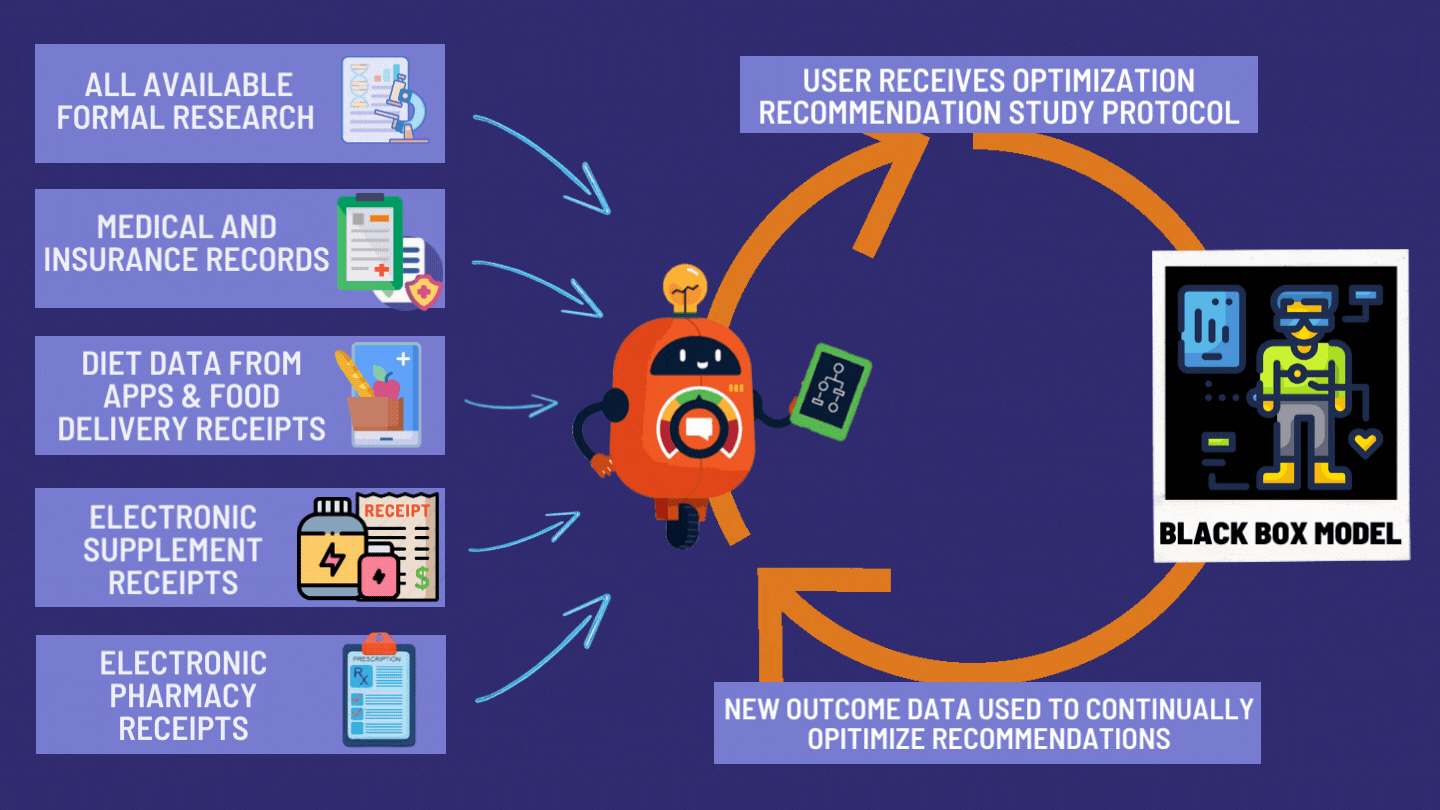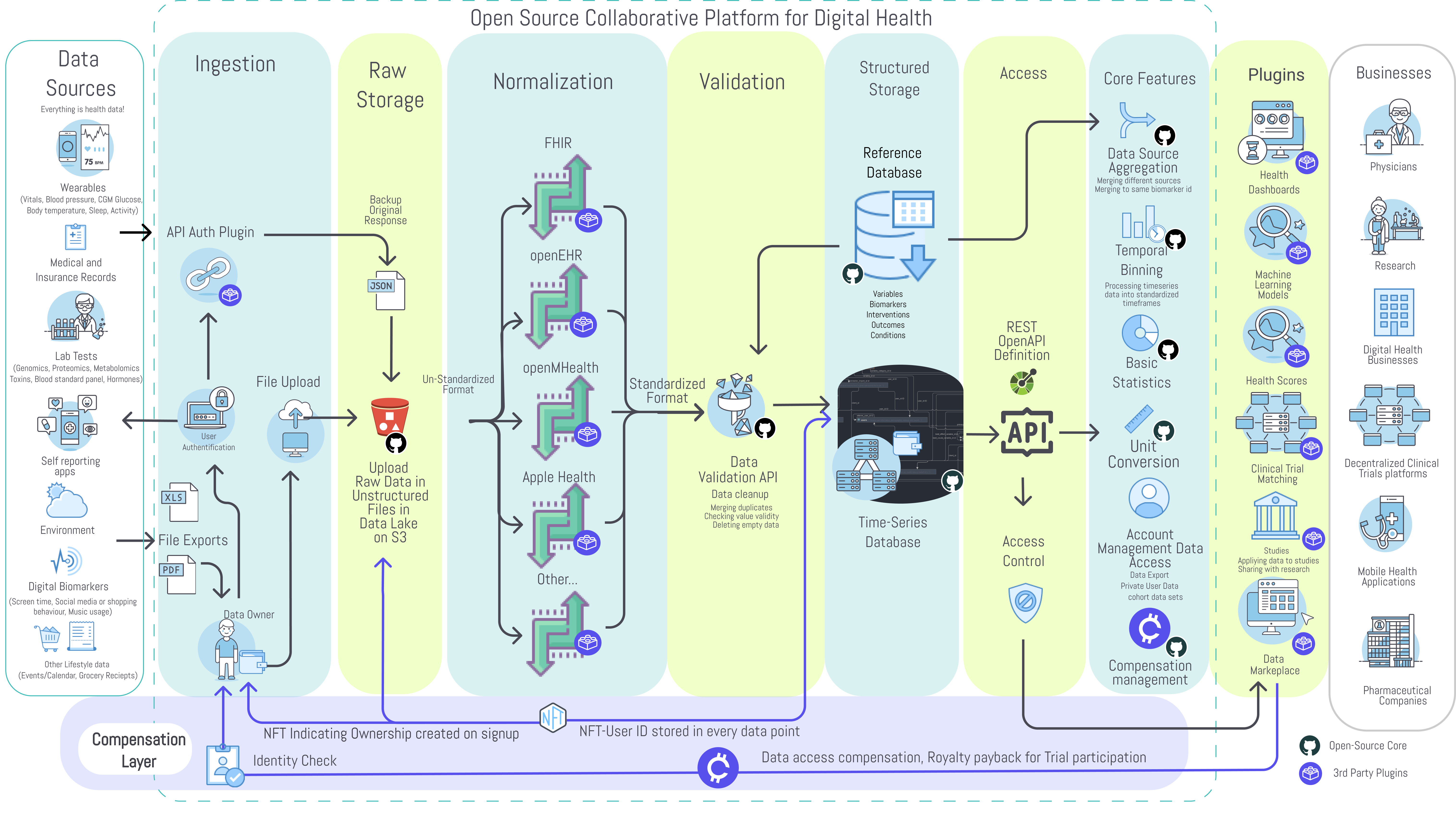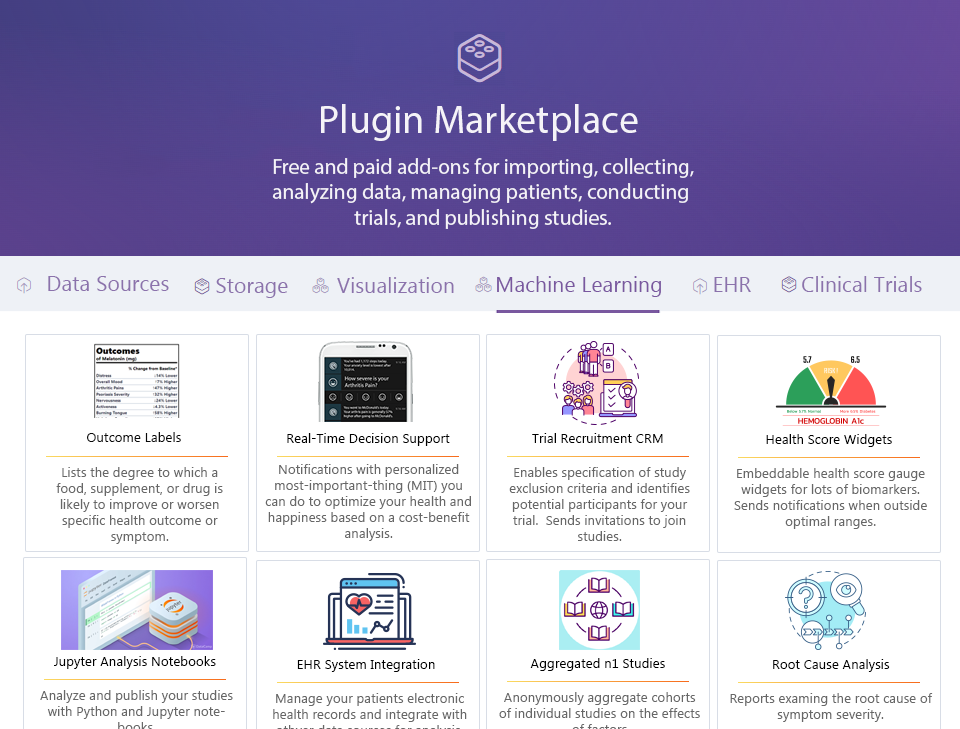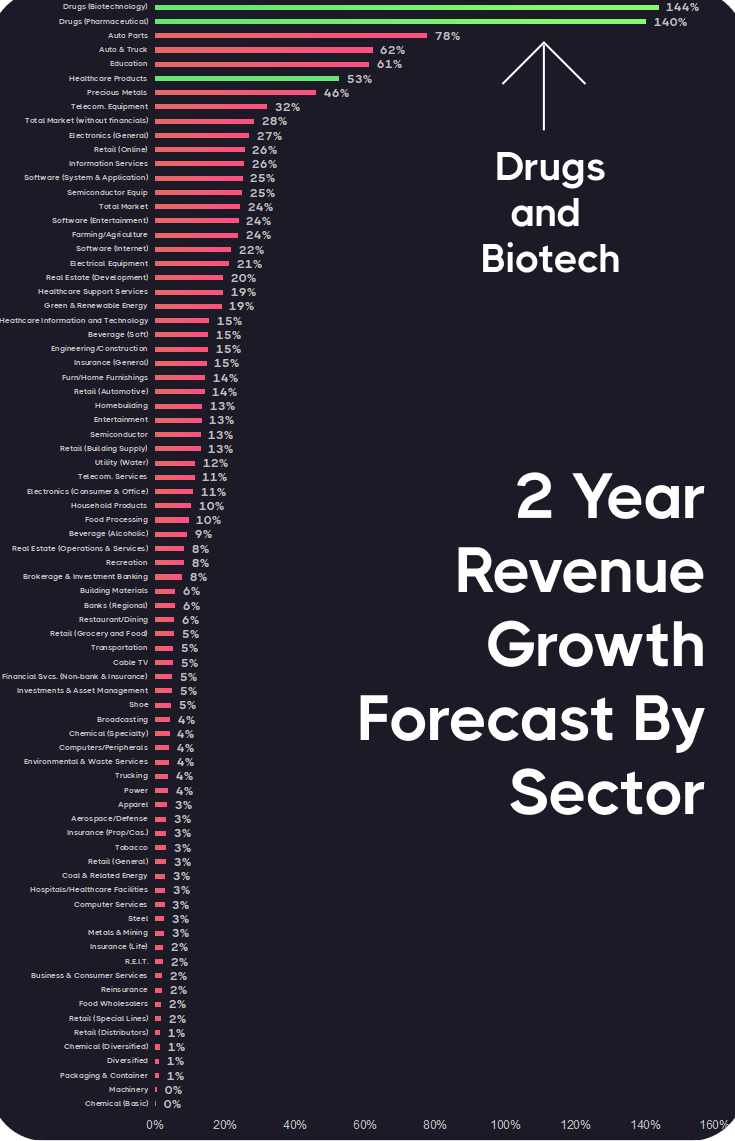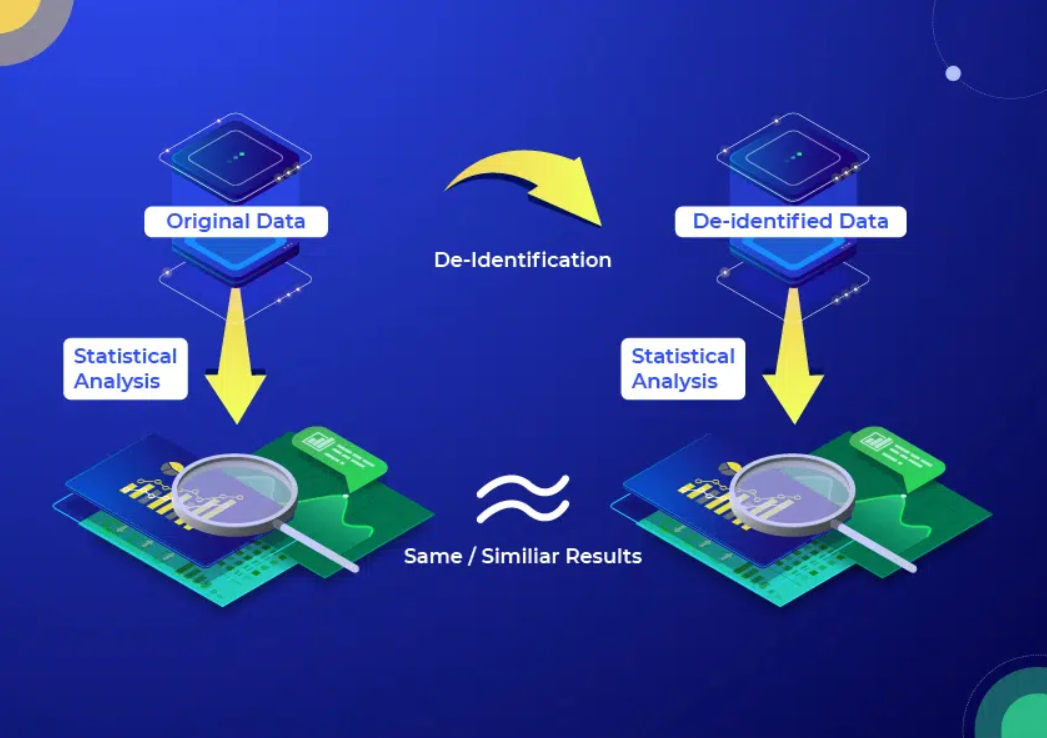---
description: >-
CureDAO is an open, democratic, and meritocratic organization building a community-owned no-code digital health platform to accelerate the personalized, precision medicine of the future. 🚀 ️
---Digital health innovation has failed. Despite the explosion in health data and digital health technology over the last decade, there's been no measurable reduction in disease burden. 🤢
This is due to a market incentive structure that punishes open-source cooperation, and data sharing and 💰 rewards closed, proprietary, and wasteful duplication of effort.
Over 350,000 digital health developers are ultimately trying to improve human health and wasting billions of dollars 💸 and billions of hours ⏳ building the same features. CureDAO utilizes a new meritocratic economic system of Collaborationism that will transcend the incentivization failures and inefficiencies of previous economic models such as Communism and Capitalism.
The CureDAO incentive structure overcomes the traditional collaboration and data sharing barriers by encoding contributions through non-fungible tokens (NFTs). Using smart contracts, the platform will compensate all contributors with royalties.
Our hypothesis (and dream) is that this new system can accelerate the rate of clinical discovery 350,000 times 🚀️ and create a world where suffering is optional. 😃
But we can't realize this dream without you!
Not convinced yet? 😕 Then venture on, dear reader!
Our first project is a community-owned, open-source, no-code platform for health data aggregation and analysis.
It will provide a basic foundational technology layer to remove barriers for physicians, researchers, clinicians, and developers of digital health applications.
It consists of two primary components:
- Storage
- Security
- Access Control
- De-identified Data Sharing
- API with Advanced Querying Capabilities
- Data import from any source
- Data Format Transformation
- Data visualizations
- Machine learning algorithms
- Data analysis
- Personalized Health Dashboards
The CureDAO community is open to anyone interested in preventing suffering and death from chronic diseases and degenerative diseases. Success in this mission will be an exponential function of the participation of people like you. 🚀
Surely, you've been persuaded by now after seeing all those exciting diagrams?
Over 2 billion people are suffering and 150,000 people die every single day from preventable diseases. For perspective, this is equivalent to:
The solution is to use the oceans of real-world evidence to accelerate the discovery of new cures and reveal hidden causes of disease.
The human body can be viewed as a black box with inputs (like diet, treatments, etc.) and outputs (like symptom severity). We're creating a mathematical model of human biology to determine the input factors and values that produce optimal health outcomes.
- Diagnostics - Data mining and analysis to identify causes of illness
- Preventative medicine - Predictive analytics and data analysis of genetic, lifestyle, and social circumstances to prevent disease
- Precision medicine - Leveraging aggregate data to drive hyper-personalized care
- Medical research - Data-driven medical and pharmacological research to discover new treatments and medicines
- Reduction of adverse medication events - Harnessing big data to spot medication errors and flag potential adverse reactions
- Cost reduction - Driving better patient outcomes for long-term savings
- Population health - Identify health strategies based on demographic, geographic, and socioeconomic trends
It takes over 10 years and $2.6 billion to bring a drug to market (including failed attempts). It costs $41k per subject in Phase III clinical trials.
The high costs lead to:
1. No Data on Unpatentable Molecules
We still know next to nothing about the long-term effects of 99.9% of the 4 pounds of over 7,000 different synthetic or natural compounds. This is because there's only sufficient incentive to research patentable molecules.
2. Lack of Incentive to Discover Every Application of Off-Patent Treatments
Most of the known diseases (approximately 95%) are classified as rare diseases. Currently, a pharmaceutical company must predict particular conditions to treat before running a clinical trial. Suppose a drug is effective for other diseases after the patent expires. In that case, there isn't a financial incentive to get it approved for the different conditions.
3. No Long-Term Outcome Data
It's not financially feasible to collect a participant's data for years or decades. Thus, we don't know if the long-term effects of a drug are worse than the initial benefits.
4. Negative Results Aren't Published
Pharmaceutical companies tend only to report "positive" results. That leads to other companies wasting money repeating research on the same dead ends.
5. Trials Exclude a Vast Majority of The Population
One investigation found that only 14.5% of patients with major depressive disorder fulfilled eligibility requirements for enrollment in an antidepressant trial. Furthermore, most patient sample sizes are small and sometimes include only 20 people.
6. We Only Know 0.000000002% of What is Left to be Researched
The more research studies we read, the more we realize we don't know. Nearly every study ends with the phrase "more research is needed."
If you multiply the 166 billion molecules with drug-like properties by the 10,000 known diseases, that's 1,162,000,000,000,000 combinations. So far, we've studied 21,000 compounds. That means we only know 0.000000002% of the effects left to be discovered.
Despite this growth in data and technology, we've seen increased costs and disease burden and decreased life expectancy.
The reason is awful incentives. There are more than 350,000 health apps, and each costs an average of $425,000 to develop. Most have significant overlap in functionality, representing a cost of $157,500,000,000 on duplication of effort.
Isolated streams of health data can only tell us about the past. For example, dashboards filled with descriptive statistics such as our daily steps or sleep.
If this data and innovation efforts were combined, this could increase the rate of progress by 350,000 times.
The obstacle has been the free-rider problem. Software developers that open source their code give their closed-source competitors an unfair advantage, increasing their likelihood of bankruptcy.
How to Overcome the Free-Rider Problem and Reward Open-Source
- Government Grants - Currently, governments spend billions funding closed-source propriety health software. The Public Money, Public Code initiative requires governments to recognize software as a public good that is open source. This would lead to massive grant funding for open-source digital health projects.
- Open-Source Royalty Compensation - By encoding contributions to the project with NFTs, we can provide ongoing royalty payments to open-source contributors.
- Licensing - The project core framework will be open-source for non-commercial purposes. However, we will utilize a Fair-code or Fair Source licensing model to generate revenue when used by for-profit entities. Licensing fees will be negotiated such that a fraction of the profits generated by the licensee's project use.
- Managed Software-as-a-Service - WordPress, the most widely used web framework globally, is free and open-source. However, it still manages to generate $1.3 billion in revenue annually by providing managed hosting services. Similarly, with CureDAO hosting services, digital health companies can save months of development time and tens of thousands of dollars using our platform instead of reinventing the wheel.
- For-Profit Plugins - There are over 58,000 unique plugins for WordPress. Combined, these generate $636 billion in revenue annually. They contribute to improvements of the open-source core WordPress platform because these improvements benefit their business directly.
An open-source core platform and plugin framework transform data into clinical discoveries.
The functional scope of the core platform includes:
- Aggregating
- Managing
- Processing
- Storing
health data from different sources.
Create a basic foundational technology layer suitable for any digital health application that provides better interoperability, portability, availability, analysis, and data security.
- EHR Systems for healthcare providers
- User-centered dashboards for personal health management
- Data sharing with doctors, health coaches, or family members
- Decentralized clinical trial platforms
- Patient recruitment services for clinical trials
- Citizen science platforms
- Health data marketplaces
- Open health databases for research
- Algorithm and scores development (e.g., in-silico trials)
- Niche health applications with specific requirements or custom integrations
The platform consists of two primary components:
- Core Open-Source Platform - The core platform is open-source and includes only universally necessary features. This primarily consists of user authentication, data owner access controls, data storage, data validation, and an API for storage and retrieval.
- Plugin Framework - Plugins will provide additional functionality like data import from specific sources, data mapping to various formats, data analysis, data visualization, notifications. These may be free or monetized by their creator.
Data Ingestion and Access API
The Unified Health application programming interface (API) includes an OpenAPI specification for receiving and sharing data with the core database. Software development kits (SDKs) will enable developers to implement easy automatic data access and sharing options in their applications.
Data Mapping and Validation
Data from files or API requests can be mapped into a standard schema from many different proprietary formats.
Data Ownership
Data should be owned by the individual who generated it. It should remain under their control throughout the entire data life-cycle from generation to deletion.
Data Compensation
Value stream management allows the exchange of data for tokens.
3rd party plugins can interact with the core and provide additional functionality. They may be free or monetized by their creator. These include:
- Data Import Plugins
- Data Visualization Plugins
- Machine Learning Plugins
- Electronic Health Record System Plugins
- Clinical Trial Management Plugins
Data Analysis Plugins
Data Analysis Plugins will apply statistical and machine learning methods to the ocean of high-frequency longitudinal individual and population-level data. The resulting value will include:
- Personalized Effectiveness Quantification - Determination of the precise effectiveness of treatments for specific individuals
- Root Cause Analyses - Revelation of hidden factors and root causes of diseases
- Precision Medicine - Determination of the personalized optimal values or dosages based on biomarkers, phenotype, and demographics
- Combinatorial Medicine - Discover relationships between variables or combinations of interventions
- Optimal Daily Values - Determination of the personalized optimal dosages of nutrients or medications
- Cost-Benefit Analysis of interventions by weighing clinical benefit against costs in terms of side effects and financial impact
Example Data Presentation Plugins
- Outcome Labels
- Predictor Search Engines
- Root Cause Analysis Reports
- Observational Studies
- Real-Time Decision Support Notifications
We use the DAO structure and NFT IP royalties to reward data sharing and open-source collaboration.
This illustrates the flow of value between different stakeholders. Unlike traditional zero-sum games, CureDAO provides everyone with more value from participation than they have to put into it.
Incentives for Patients to share their de-identified data will include:
- Actionable ways to prevent and mitigate chronic illnesses.
- The ability to license and earn a share of income for the use of their data for research and development by pharmaceutical companies and other businesses. NFTs will be linked to the user's cryptographic wallet address. Using a smart contract, the user will receive an ongoing royalty share of the profits for any product developed using their data for research and development.
Businesses housing data silos include health insurers, pharmacies, grocery delivery services, digital health apps, hospitals, etc. These will be incentivized to allow individuals to easily share their data via a well-documented OAuth2 API by:
- A share of income for using their data for research and development.
- An on-site instance of the OAuth2 server to retrieve required data from their on-premise databases.
- Reduction in their employee healthcare costs (one of their most significant expenses)
- Reduced costs of software development.
- Massive free marketing exposure through company branded plugins in the Plugin Marketplace.
- Revenue derived from their plugins in the Plugin Marketplace.
Disease advocacy nonprofits will benefit from promoting studies to their members by:
- Furtherance of their mission to reduce the incidence of chronic illnesses.
- Member engagement more productive than the traditional charity walk.
- A reduction in healthcare costs due to discovering new ways to prevent and mitigate chronic illnesses.
- Furtherance of their stated reason for existence to protect and promote the general welfare.
- Their duty to protect the rights of individuals' data. To fulfill this, they must require businesses in possession of it to give them the ability to access and share their data via a well-documented OAuth2 API
- Cost-savings from international cost-sharing by using global open-source software.
- Epidemiological discoveries on the effectiveness of different public health regulations between nations.
- Gitcoin Bounties for specific tasks
- Encoding git commits with NFTs entitling the developer to ongoing royalties in proportion to their contributions.
CureDAO is a laboratory consisting of many experiments.
It's a global laboratory where the 7 billion human "natural experiments" are conducted, revealing the effects of various factors on human health and happiness.
It's an experiment to determine if a new model for clinical research using real-world data can more effectively reduce the global burden of chronic illness.
It's an experiment to see if a new economic model called Collaborationism can reward the creation of open-source "public goods" and overcome the failures of Capitalism and Communism.
It's an experiment to determine if a direct democracy can produce better results than traditional hierarchical command and control organizations.
Given the unprecedented nature of such a project, each working group will constantly be experimenting with new ways to execute this mission. We recognize the importance of using real-world evidence to improve human health. Execution within the working groups should take the same data-driven approach to manage their area of the overall mission.
Accordingly, the organization is composed of three primary components.
- Citizen Scientists - CureDAO is an open and permissionless organization. Anyone has the right to earn their Citizenship through the contribution of labor or resources. In exchange, the Citizen Scientist will receive CureDAO tokens granting full governance rights over the actions of DAO Lab Staff.
- DAO Laboratories - Internal working groups that carry out the Citizen Scientists' will.
- External Service Providers - Individuals or entities outside the DAO deemed necessary to carry out the Citizen Scientists' will.
The CureDAO governance token is used to incentivize data sharing and open-source collaboration. Tokens are obtained by contributing work, data, IP, or funds to CureDAO.
Tokens grant CureDAO Citizen Scientists the right to decide how the DAO's resources are distributed.
The goal of CureDAO is for every human on earth to share the natural experiments that define their existence. The world's population is projected to peak at 9.4 billion around 2070. To enable everyone to become a Citizen Scientist, 9.4 billion CureDAO tokens will be created.
The genesis distribution event will make 10% of CureDAO's total token supply available to interested participants using a fair and open smart contract auction.
Since CureDAO's genesis operates via a public auction, the community decides the initial token price. We estimate a minimum of $5,000,000 will be required to support the first iteration of the platform.
CureDAO generates revenue streams to compensate IP and data contributors and sustain and grow the project. The biotech and pharmaceutical industries are two of the fastest-growing sectors of the U.S. economy.
These factors all point to a massive potential for the revenue necessary to sustain this project. The primary sources of income include:
- Sale of high-frequency longitudinal de-identified data to
- pharma for drug discovery
- research institutions for funded studies
- Grants from governments modernizing their programs to take advantage of real-world data
- Digital health companies wishing to accelerate product development using existing white-label software or hosted software-as-a-service (SaaS) options
Digital health companies can save months of development time and tens of thousands of dollars by using our platform instead of reinventing the wheel. A usage-based subscription platform for health application developers would start at $0.50/end-user per month.
Electronic health records (EHRs) can be used to support randomized controlled trials (RCTs). A meta-analysis found that the per-patient cost in EHR-supported trials varied from $44 to $2000. Using NFTs, we can link donated data to the patient to receive ongoing royalty payments for the use of their data once new interventions reach the market.
The project core framework will be open-source for any non-commercial purpose. However, we will utilize a Fair-code or Fair Source licensing model to generate revenue when used by for-profit entities. Licensing fees will be negotiated such that a fraction of the profits generated by the licensee's project use.
A decentralized autonomous organization, or a "DAO," is an "organization" encoded as a transparent computer program, controlled by the organization members and not by a central corporate entity. CureDAO will utilize an unincorporated nonprofit association (UNA) as a 'wrapper' to facilitate the entering of contracts.
CureDAO will use deidentification and obfuscated but equivalent data synthetically derived from actual patient data to protect privacy.
Data de-identification is the process of eliminating Personally Identifiable Data (PII) from any document or other media, including an individual's Protected Health Information (PHI). The HIPAA Safe Harbor Method is a precise standard for de-identifying personal health information when disclosed for secondary purposes.
ARX is an open-source tool that anonymizes sensitive personal information. It supports a range of privacy and risk models, techniques for data transformation, and techniques to analyze the utility of output data.
The deid software package includes code and dictionaries that automatically locate and remove PHI in free text from medical records.
Synthea is an open-source, synthetic patient generator that models the medical history of artificial patients. Our mission is to provide high-quality, synthetic, realistic but not actual patient data and associated health records covering every aspect of healthcare. The resulting data is free from cost, privacy, and security restrictions, enabling research with Health IT data otherwise legally or practically unavailable.
- Define collaborators and partners, health data tech
- Setup DAO architecture and infrastructure
- Build community
- Fundraising phase (Genesis)
- Collaborators vote for core features
- Build MVP alongside use in showcase trial
- Internal testing with collaborators
- Release V1 of the Software Framework
- Open testing with partners
- Integrate with other tech architecture (storage providers, data marketplaces, analysis software, etc. )
- Integrate with operating health data standards and Electronic Health Record
- Build showcase plugins
- Release V2 of the Software Framework
- Open shared health database for research access
- Trials platform with participation royalty payback
- User-centered health management
- Algorithm and scores development
- Data marketplaces
- Create plugin marketplace
- Create a No-code platform for instances/connectors
- Build hosted SaaS service
- Create documentation and education material
- Promote broader usage
- Introduction and Challenges
- Solution
- Platform
- Incentivization
- Organization
- Tokenomics
- Revenue
- Legal Framework
- Privacy
- Ecosystem
- Roadmap
- References
My boy. You've won the chocolate factory! You did it! You did it! I knew you would! I just knew you would!
👉 Just click this link and CureDAO is all yours!
This work is licensed under a Creative Commons Attribution-NonCommercial-ShareAlike 4.0 International License.

